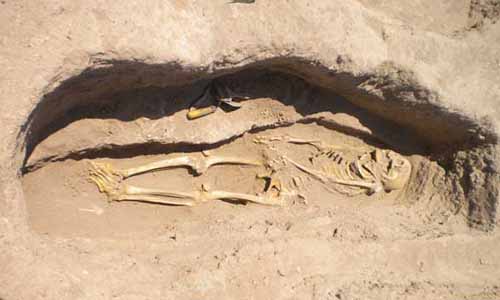In a skeleton more than 6,200 years old scientists have found the earliest known evidence of infection with a parasitic worm that now afflicts more than 200 million people worldwide. Archaeologists discovered a parasite egg near the pelvis of a child skeleton in northern Syria and say it dates back to a time when ancient societies first used irrigation systems to grow crops.

Scientists suspect the new farming technique meant people were spending a lot of time wading in warm water ideal conditions for the parasites to jump into humans. That may have triggered outbreaks of the water borne flatworm disease known as schistosomiasis.
The invention of irrigation was a major technological breakthrough (but) it had unintended consequences said Gil Stein a professor of Near Eastern archaeology at the University of Chicago one of the report s authors. Stein said there was evidence of wheat and barley farming in the town where the skeletons were found and that irrigation might have also spurred outbreaks of other diseases like malaria by creating pools of stagnant water for mosquitoes to breed. Other experts agreed it was likely that irrigation spread parasitic diseases beginning in ancient times.

Egypt along the Nile was a hotspot for generations because people were crammed into the flood plain and there were probably a lot of people who had low level (flatworm) infections for their entire lives said Quentin Bickle a parasite expert at the London School of Hygiene and Tropical Medicine. People would have known there was something weird going on but they wouldn’t have known what to do about it. -thenews











